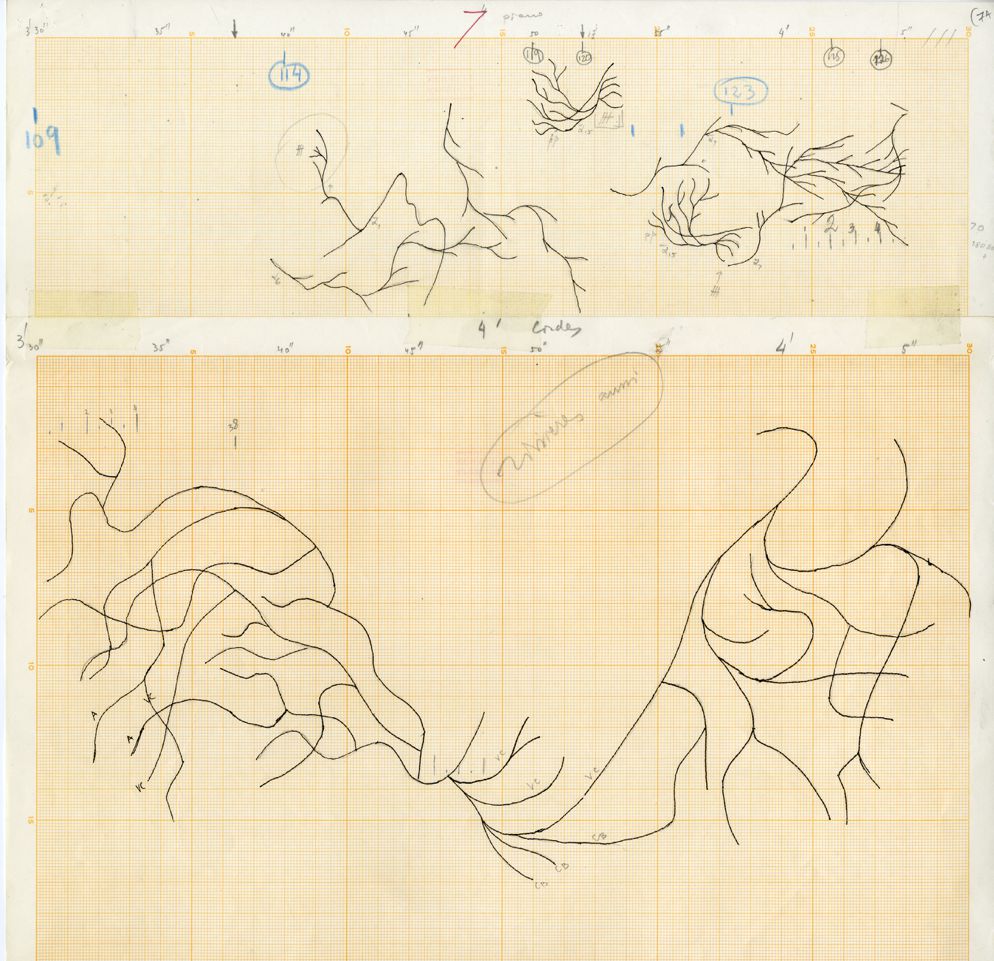Pierre Carré Xenakis grouped together under the term polytopes a series of various shows that mixed music, light and architecture in a total sensory experience: the Polytopes of Montreal, Persepolis, Cluny, Mycenae, and the Diatope. Although they share the same name, these shows, produced between 1967 and 1978, take very different forms depending on the […]
Author: ix_admin
Peter Hoffmann This technique refers to a method of computer sound synthesis. The original conception dates back to 1962, when Xenakis was working with his ST algorithm, resulting in the stochastic compositions ST/x (see Stochastic Music). Stochastic synthesis rejects Fourier analysis or pure electronic sounds and favors applying stochastic processes directly to the sound pressure […]
Agostino Di Scipio In the mid-1970s Xenakis began developing the UPIC system, a computer music system having a drawing surface as input device: drawings made on a CAD-like tablet (Computer Assisted Design) could be made into sounds through a software interface, a dedicated processor and a digital-to-analogue converter. UPIC (Unité Polyagogique Informatique du CEMAMu [Centre […]
Agostino Di Scipio In the jargon of electronic and computer music, granular synthesis refers to a vast range of sound synthesis and processing techniques sharing a common basic assumption: in principle, any sound can be modelled by juxtaposing and piling up large amounts of grains, the latter being defined as time-finite signals of given frequency […]
Peter Hoffmann A cellular automaton (CA) governs, among others, only a few bars in Horos (1986) and, through an act of self-borrowing, in Ata (1987) (see Solomos 2006); however, this late example of a musical appropriation of a scientific model is particularly telling for Xenakis’s passion for science, mathematics and computation on the one hand […]
Dimitris Exarchos & Peter Hoffmann Metamusic, a term coined by Iannis Xenakis, is the idea of a music of a higher order which would contain any existing music of any tradition as a special case. In other words, Xenakis’s postulated metamusic is universal in the sense that it encompasses all musics of all time and […]
James Harley In Chapter 4 of Formalized Music (1992), “Musical Strategy—Strategy, linear programming, and musical composition,” Xenakis explores musical applications of game theory. First developed by computer science pioneer John von Neumann (1903-57), game theory was presented in pure mathematics first, then applied to economic behavior theory, among other fields. In essence, game theory is […]
James Harley The concept and technique of arborescence came to Iannis Xenakis after he had written and published his important texts about his music. He began working with it in the early 1970s, about the same time as Formalized Music was published in its English, expanded form (Xenakis 1971). Regrettably, he does not mention it […]
This dictionary aims at providing definition of concepts in the practice and thinking of Iannis Xenakis. While the focus is on Xenakis’s own terms, the dictionary also includes terms and concepts introduced by specialists, deemed valuable in understanding Xenakis’s philosophy and practice of composition. The aim is twofold: firstly, to provide clear definitions for readers not […]
In progress…


